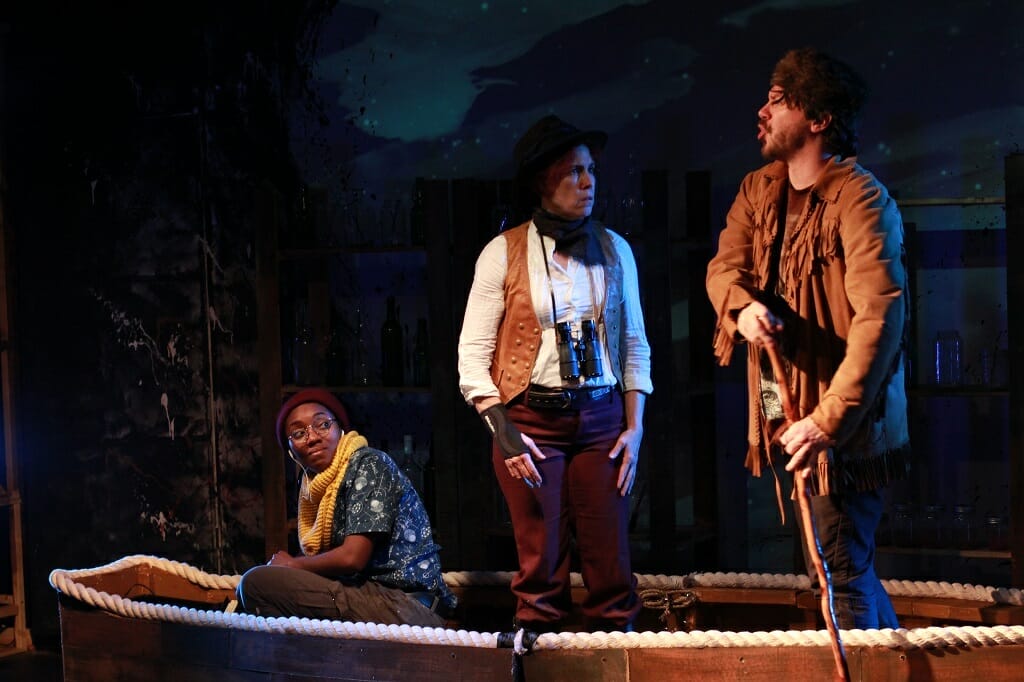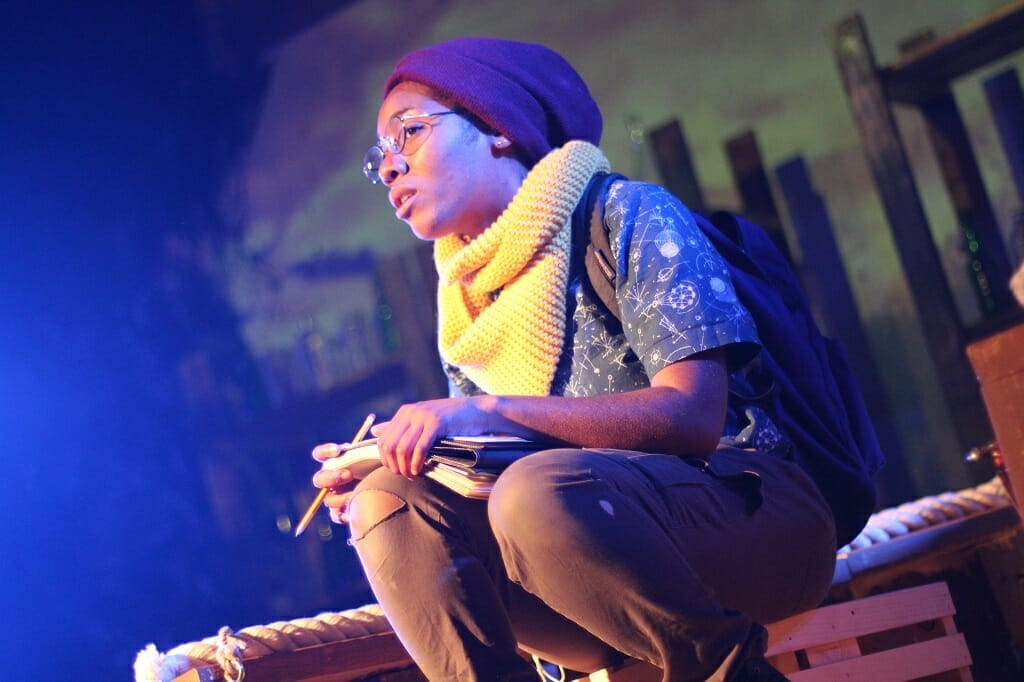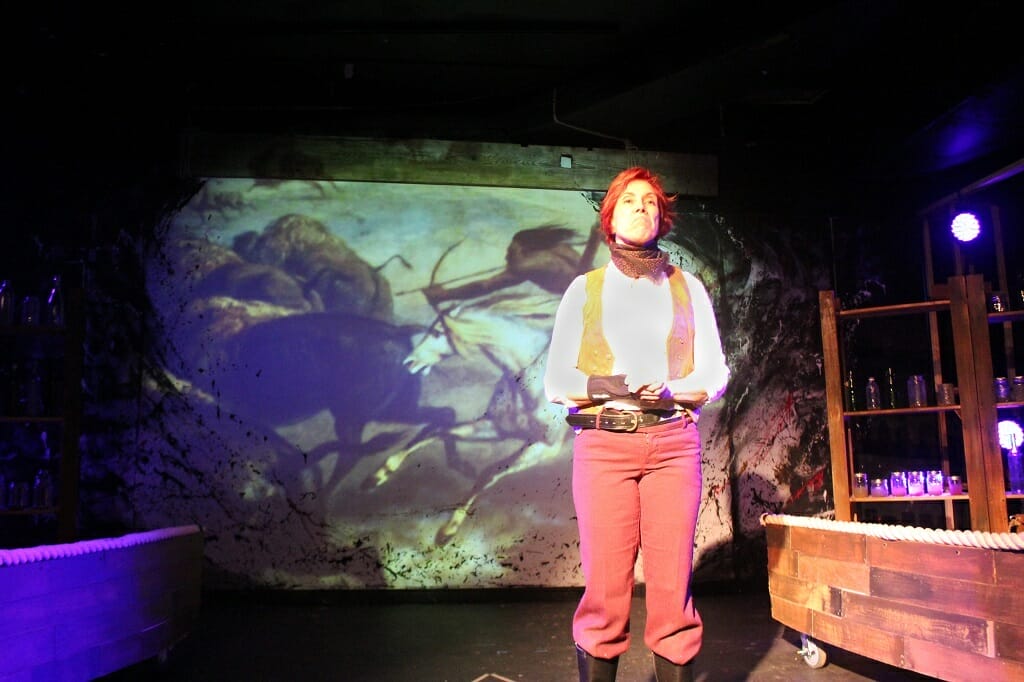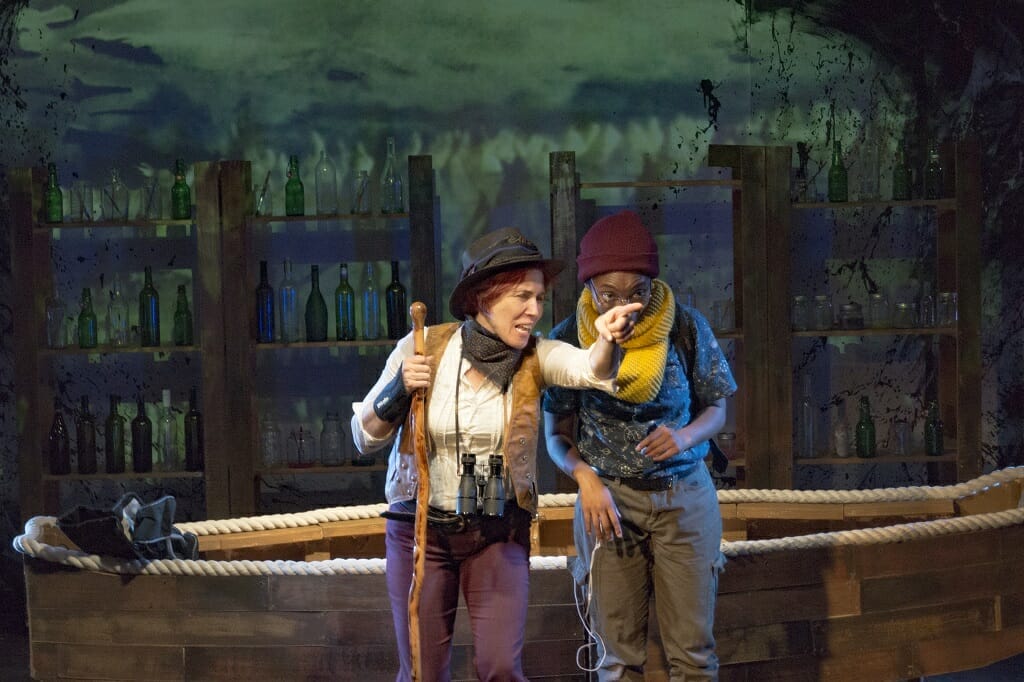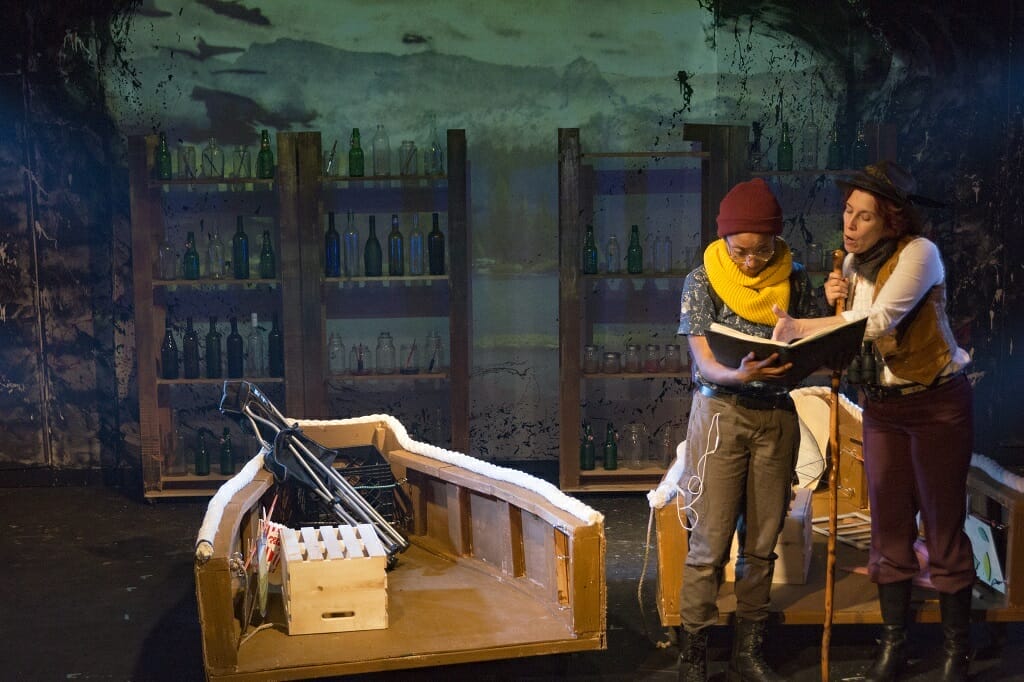In the black box space on the third floor of the Den, rain falls. We see the actors take the stage and the stage is terra incognita, a thousand miles from civilization. As the show begins, supertitles reassure the incredulous as to the veracity of the improbable if not outright incredible things they are about to see: THIS WAS AN ACTUAL TRIP. And then, parenthetically: FOR REAL.
[embedyt] https://www.youtube.com/watch?v=cV21T9fatvI[/embedyt]
Red Theater Recreates the Story Behind the History
From that very first scene of Prince Max’s Trewly Awful Trip to the Desolat Interior, huddled on a boat in the pouring rain, a pair of caged bears looming in the background, we are right there in thick of it with Prince Alexander Philipp Maximilian and Johann Carl Bodmer as they make their way up and down the Missouri River in hope of preserving a glimpse of unspoiled America--before it is swallowed up by the ever-advancing frontier.
Heather Riordan as the titular aristocrat-turned-explorer-and-naturalist and Charlee Cotton as the painter shanghaied--sorry, hired--to reproduce on paper the flora, fauna, and people of the New World anchor the show as opposites in almost every regard.
Riordan brings a foppish yet genuinely curious and adventurous spirit to Prince Max, while Cotton shows us a Bodmer who starts out as a starving artist in need of a job yet comes to appreciate the unique opportunity to capture an unknown land and way of life. Separated by thirty years of age and incalculable strata of social rank, Max and Bodmer’s greatest difference lies in their philosophy of art. For the former, it is just one more tool to bring home information, akin to his beloved thermometer. For the latter, it is a way to memorialize places, things, and people in their time and context, from a particular perspective.
Talented Actors and Versatile Set Guide Us Across America
It is to the credit of the actors and the design team that this little black box so convincingly transforms before our eyes from a bridge on the Continent to an American metropolis to the wilderness of the country to the abodes of the indigenous people. With a boat that unfolds to be any sort of setting you could want, some nifty projections in the background, and a cast who fluidly inhabit one location after another, Prince Max deftly takes us along for the ride.
Though Cotton and Riordan’s companionship, viewpoints, and friction indisputably form the heart of the story, also worthy of note is Scot West in a series of bit parts bringing the main two closer to or further from their goal. Whether as a Bostonian rebuffing Max’s request to see some native Americans (‘My family’s lived here for thirty years!’), a hired guide pointing out the perils and pleasures of life on the prairie, or the Future Ghost of a Giant Bear offering supernatural meditations on mortality, West brings color to the background and gives the leads something to push off of and react to.
Glorious Anachronism
One of the most fun or most infuriating things about Red Theater’s production, depending on your tastes, is its gleeful digression from historical verisimilitude. Most immediately, we have a pair of women playing a German prince and a Swiss watercolorist, the latter a woman of color; but the genius of Prince Max extends far beyond its “total disregard for chronology and gender.” In the language, peppered with modern slang and neologisms; the props, a wholesale mix of the 1830s and 2010s (Riordan using an electric hairdryer to desiccate leaf specimens is a particularly successful gag); and even some of the scenes--you haven’t heard karaoke till you’ve heard “Desperado” sung in a German accent around a Native American campfire,
while Cotton shows off an impressive set of pipes on “Bridge Over Troubled Water”--we are treated to an episode of history rendered more human and alive through playwright Ellen Struve’s incorporation of improbable anachronisms.
This crystallizes in Max’s repeated question to Bodmer and himself: do you see human beings as separate from one another, or as endless variations on a theme? A timeless query between two men as unalike as can be yet bound together in the same quest, this motif invites us to consider the characters, the historical figures, and ourselves, and how we fit into the artist’s portrait of America.
RECOMMENDED
Note: This is now added to the Picture this Post round up of BEST PLAYS IN CHICAGO. Click here to read — Top Picks for Theater in Chicago NOW – Chicago Plays PICTURE THIS POST Loves.
When:
Now through May 20
Friday, Sat, and Monday nights at 730pm
Sundays at 3pm
Where:
Den Theatre
1333 North Milwaukee
Chicago
Tickets:
Free or suggested $20 donation via the Red Theater website at https://redtheater.org/tickets/
Photos:
Rasean Davonte Johnson
Aaron Sawyer
Note: An excerpt of this review appears in Theatre in Chicago.
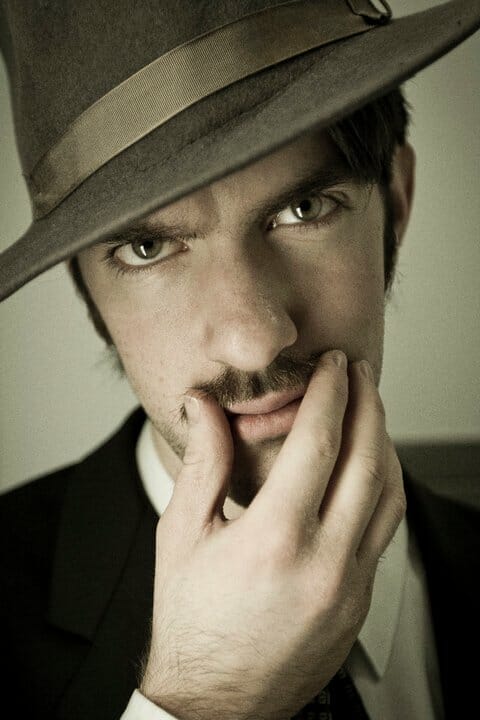 About the Author:
About the Author:
Harold Jaffe is a poet, playwright, amateur trapeze artist, freelance greeting card designer, and now, unexpectedly, a theater critic. He earned a BS in Electrical and Computer Engineering at Olin College and since returning to Chicago has worked extensively with Cave Painting Theater Company and the late great Oracle Productions. His chapbook Perpetual Emotion Machine is now available at Women & Children First, and his reviews of shows around town are available right here.

